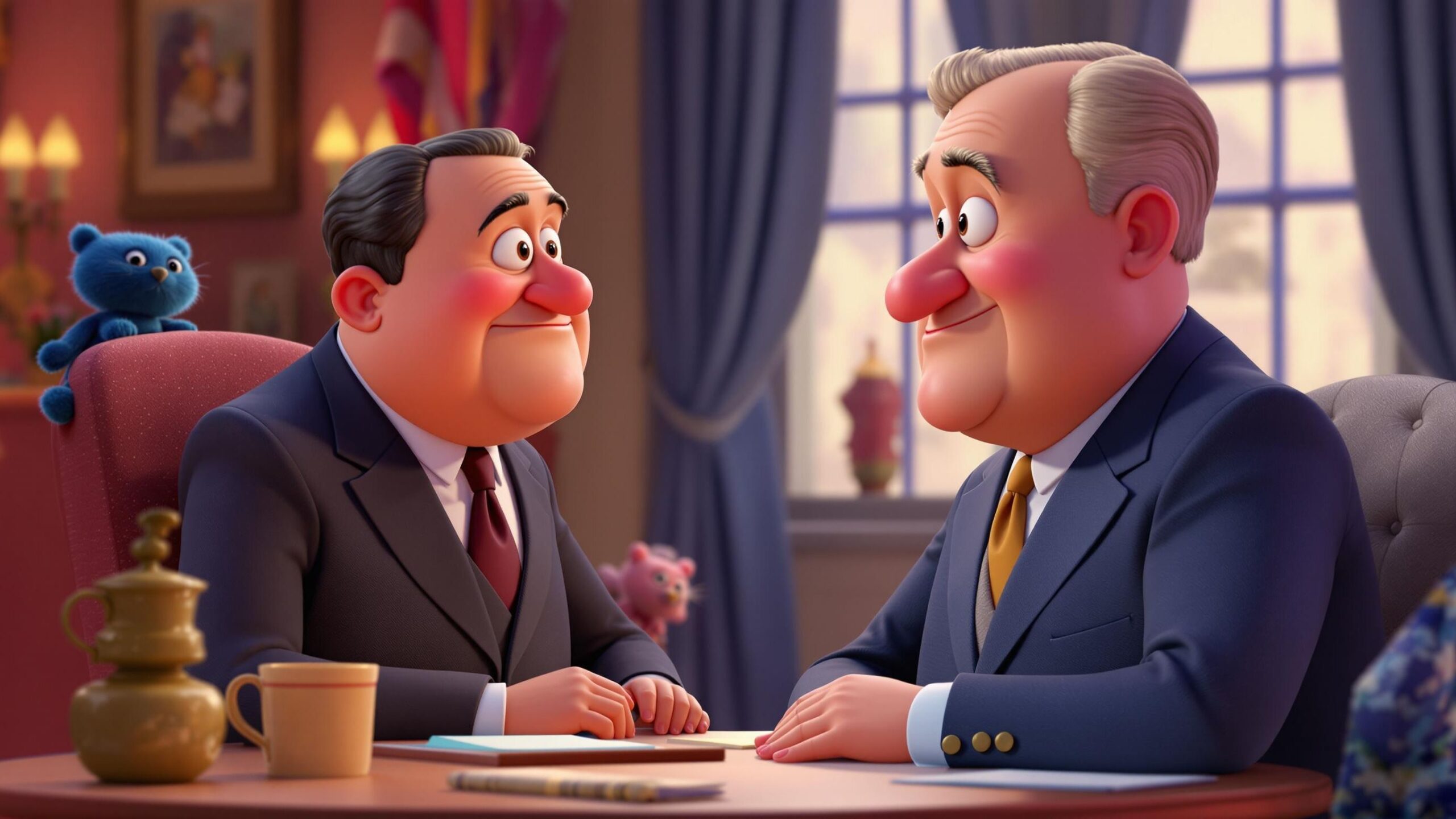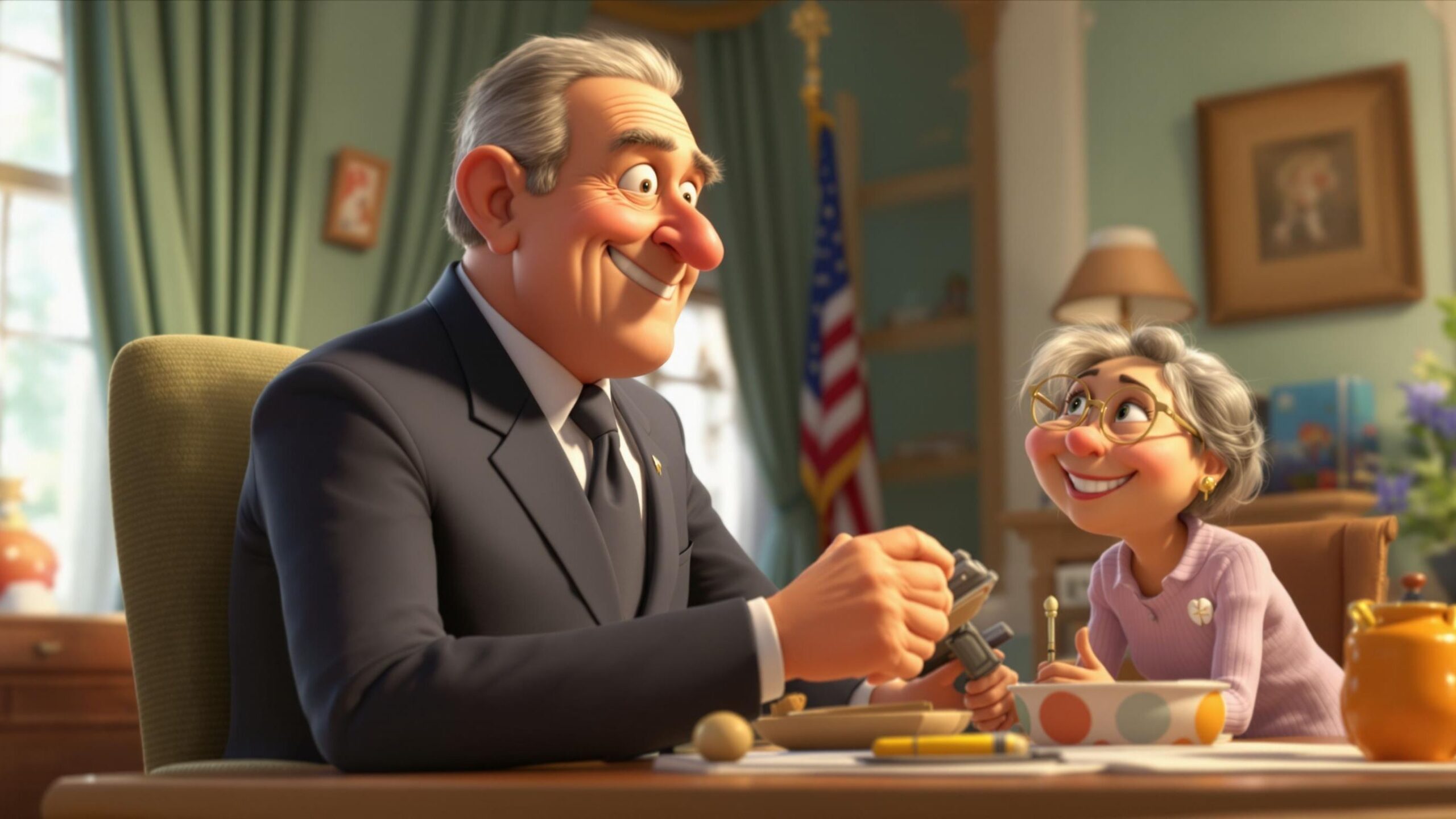The Voice That Carried a Nation
When Franklin D. Roosevelt first addressed the American people as president, he didn’t stride onto a grand stage or thunder from a podium. He simply turned on a microphone, sat comfortably, and began to speak—directly, plainly, and reassuringly. And in doing so, he changed the relationship between a president and the people forever. It was 1933. The Great Depression had dragged the nation into despair. Banks were collapsing, families were hungry, and confidence was vanishing by the hour. In the midst of chaos, FDR offered not just policies, but presence. Through a radio broadcast now famously known as a “Fireside Chat,” he reached into living rooms across the country and said, in essence: “I’m here. I’m listening. And we’re going to get through this together.” With warmth, empathy, and a calm voice of authority, Roosevelt transformed the way leaders communicate—and reminded the world that words, when spoken with care, can be as powerful as armies.
Turning Static into Strength
Before Roosevelt, presidential speeches were often formal affairs—grand addresses delivered in ornate halls or scribbled into newspapers. But radio was new, raw, and wildly intimate. It wasn’t a megaphone; it was an invitation. FDR didn’t see it as a novelty. He saw it as a lifeline. He understood something revolutionary: that in a time of fear and isolation, what Americans craved most wasn’t complexity—it was connection. So he stripped away the pomp. No big words. No political jargon. Just plain talk, spoken in a way that felt as if he were sitting across from you, sipping coffee beside a warm fire. When he delivered that first Fireside Chat on banking, the impact was immediate. Americans who had been pulling their money out of banks started putting it back in. He didn’t force them to trust—he earned it, word by word. And just like that, Roosevelt proved that great leadership doesn’t just act. It listens. It explains. It communicates with purpose and heart.
The Magic of Making It Personal
FDR’s genius wasn’t just in using radio—it was in how he used it. He didn’t lecture. He conversed. His voice was steady but friendly, authoritative but never arrogant. His tone conveyed care, as if every listener mattered—because to him, they did. Roosevelt made the American people feel seen and heard. At a time when millions felt invisible—unemployed, evicted, hungry—he spoke to their concerns with empathy. He used metaphors, anecdotes, and plain-spoken language that even children could understand. When he spoke about complicated financial reforms, he described them as if explaining them to a neighbor over the fence. And it worked. Americans tuned in by the millions. They gathered around radios with their families and hung on every word. They didn’t just hear the president—they knew him. Roosevelt wasn’t just leading the government. He was leading the conversation.
A President Who Spoke in Storms
Roosevelt’s Fireside Chats weren’t limited to economic issues. He used them throughout his presidency to address a changing, trembling world. As World War II loomed, he turned again to the airwaves—not to incite fear, but to inspire readiness. His calm delivery steeled a nation unsure of what tomorrow would bring. After Pearl Harbor, when fear threatened to unmake resolve, FDR spoke not just to inform, but to unite. He acknowledged pain, but offered purpose. “The only thing we have to fear is fear itself” wasn’t just a phrase—it was a battle cry against despair. And it reached ears in every state, every town, every heart. As the war escalated, FDR kept talking—about production, sacrifice, unity, and hope. His words rallied factory workers and soldiers alike. He wasn’t on the front lines, but his voice was. It marched with the troops. It whispered courage into uncertain nights. It made the nation feel like one family, gathered around one glowing hearth.
The Strategy Behind the Warmth
While FDR sounded casual and comforting, make no mistake—his communication was strategic. Every word was chosen. Every phrase was polished. He practiced endlessly, often rewriting his chats multiple times to get the tone just right. He knew that with every broadcast, he was shaping public opinion, guiding behavior, and calming nerves. His communications team was pioneering. He employed experts in media, psychology, and public relations to ensure that the broadcasts weren’t just informative, but transformative. He measured success not in applause, but in action—how many citizens responded, how many minds shifted, how many fears were soothed. But despite all the strategy, Roosevelt never lost sincerity. He never sounded like a marketer. He sounded like a mentor. That delicate balance of careful crafting and honest heart made him a master communicator—a leader who didn’t just speak to the people, but with them.
Building Trust During Broken Times
Perhaps the most astonishing feat of Roosevelt’s communication was its power to restore trust during some of the darkest chapters of American history. The Great Depression had shattered confidence in institutions. The New Deal brought sweeping changes that bewildered and frightened many. War was a constant drumbeat on the horizon. And yet, millions trusted Roosevelt—not because they always agreed with him, but because they believed he was honest, compassionate, and willing to explain. That trust wasn’t built in one speech. It was built over dozens of Fireside Chats, press conferences, and speeches. FDR was transparent when things were hard, hopeful when they were bleak, and firm when unity was required. He didn’t sugarcoat the truth, but he always reminded Americans of their strength. He knew trust was fragile—and he guarded it with every word he spoke.
Communication as Leadership, Not Performance
In today’s media-saturated world, it’s easy to conflate communication with performance. But Roosevelt never saw his chats as theater. He saw them as a service. He respected his audience. He believed the American people were capable of understanding complex issues, as long as someone cared enough to explain them clearly. That belief in the public’s intelligence was itself a kind of leadership—one that empowered citizens to take action, make sacrifices, and believe in something bigger than themselves. Roosevelt didn’t speak to boost his ego. He spoke to raise the spirits of a nation. He understood that the true power of presidential communication wasn’t in dazzling delivery—but in meaningful connection.
The Lasting Legacy of the Fireside Flame
FDR gave thirty Fireside Chats during his presidency. Thirty carefully crafted, intimately delivered broadcasts that helped steer the country through economic collapse, sweeping reforms, and global war. And though technology has changed—though firesides are now phones, and radios now livestreams—his legacy endures. Modern presidents still chase the Roosevelt magic. Whether it’s a televised address from the Oval Office or a tweet from Air Force One, every president since FDR has had to reckon with the bar he set. The bar that says: speak clearly, lead calmly, and connect authentically. Because Roosevelt didn’t just master a medium. He mastered a message—that the president is not a figurehead, but a fellow citizen; not a distant ruler, but a trusted voice.
The President by the Fire
Franklin D. Roosevelt didn’t just lead a nation—he spoke to it, one voice at a time, one family at a time, one fear at a time. He understood that power isn’t always in policy—it’s in presence. That leadership isn’t just making decisions—it’s making people feel seen, heard, and understood. Through economic collapse and world war, through new deals and dark nights, FDR sat beside a microphone and spoke as if the fate of the nation depended on the right word at the right time—because it did. His Fireside Chats didn’t just communicate policy. They communicated care. And in doing so, they built bridges between Washington and Main Street, between government and citizen, between fear and hope. He turned the static of crisis into the music of democracy. He proved that the voice of one president, when used with wisdom and warmth, could guide millions through the storm. Franklin D. Roosevelt didn’t just light fireside chats. He lit a flame of connection that still burns in the heart of American leadership today.




